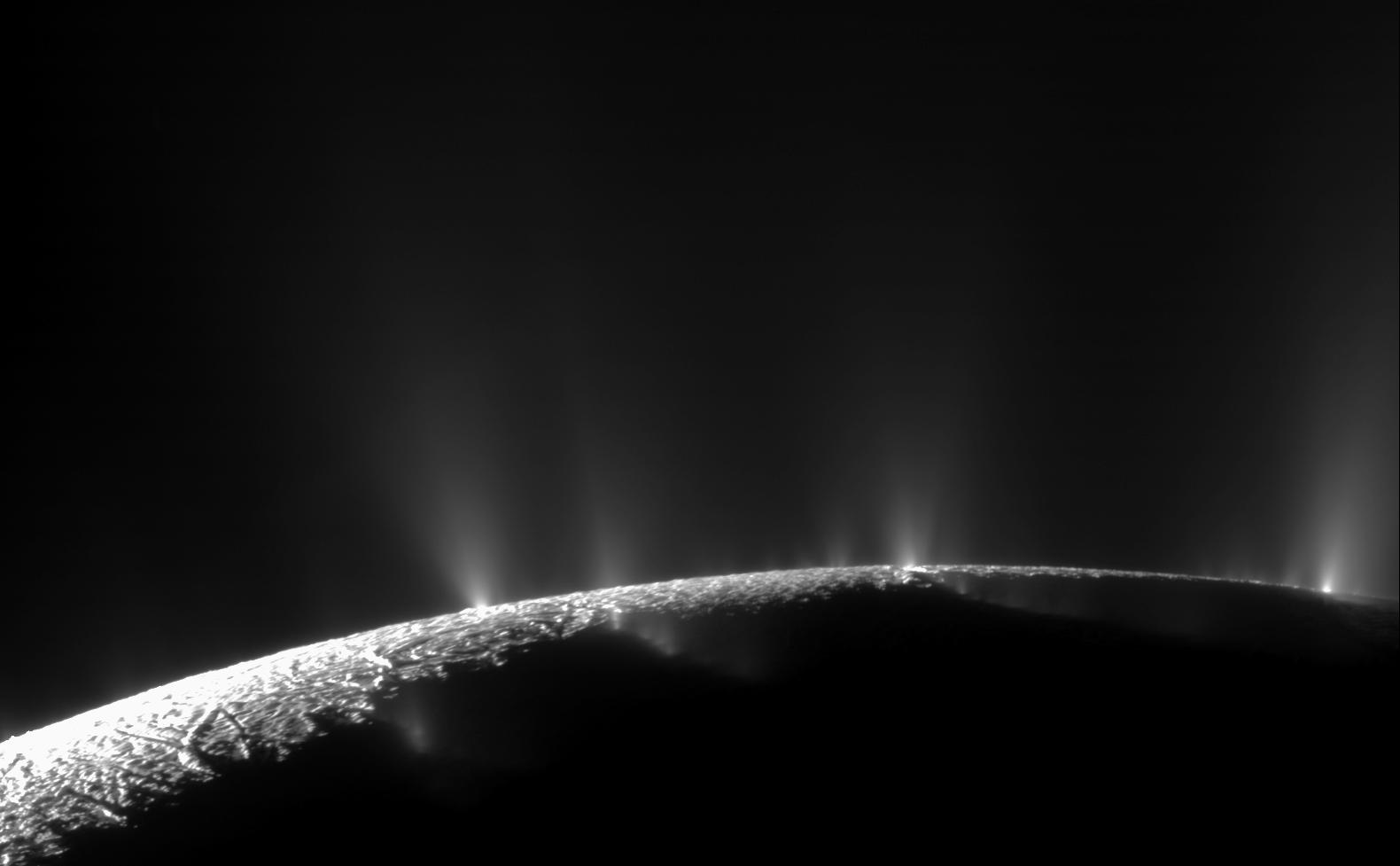4 min read
Cassini is currently orbiting Saturn with a period of 12.7 days in a plane inclined 1.3 degrees from the planet's equatorial plane. The most recent spacecraft tracking and telemetry data were obtained on Dec. 30 using the 70-meter diameter Deep Space Network station in Australia. The spacecraft continues to be in an excellent state of health with all of its subsystems operating normally except for the instrument issues described at http://saturn.jpl.nasa.gov/news/significantevents/anomalies .
Many of Cassini's flight team members enjoyed some time off for the holidays this week, but Cassini's varied scientific observations and engineering activities continued at a normal pace. So did the Deep Space Network, carrying out two-way digital communications and radiometric tracking with Cassini and about a dozen other very distant robotic spacecraft.
Wednesday, Dec. 23 (DOY 357)
Jupiter, that "other" gas giant in our solar system, was the subject of study today for the Saturn-orbiting Cassini. The Imaging Science Subsystem (ISS) telescopes tracked the planet for 15 hours, at a distance of 1,650 million kilometers from the spacecraft. Given the planets' positions (illustrated in this view from the north https://space.jpl.nasa.gov/cgi-bin/wspace?tbody=1000&vbody=1001&month=12&day=23&year=2015&hour=03&minute=00&fovmul=1&rfov=9&bfov=30&showsc=1&showac=1 ), Jupiter was more than twice as far from Cassini as Jupiter was from Earth. The observation, which included photometry and polarimetry, served the astronomical community by providing a point of comparison to observations of brown dwarfs and extrasolar giant planets elsewhere in our galaxy. The Composite Infrared Spectrometer (CIRS) and the Visible and Infrared Mapping Spectrometer (VIMS) also participated.
Thursday, Dec. 24 (DOY 358)
VIMS studied Saturn's rings for 12.6 hours while the spacecraft was coasting through the ring plane today. This observation viewed the rings while they were lit by the Sun at a phase angle near 120 degrees. CIRS made use of spacecraft pointing and observed as well, while riding along.
An out-of-focus image of Saturn among the stars made for a holiday-appropriate composition that was selected as NASA's Astronomy Picture of the Day: http://apod.nasa.gov/apod/ap151224.html.
Friday, Dec. 25 (DOY 359)
ISS carried out a one-hour observation in the satellite orbit campaign, looking for objects near Saturn. Next, ISS turned to track the Saturn’s irregular moon Erriapus for 31 hours. Named for a giant in Gaulish mythology, Erriapus is only about eight kilometers in diameter. It has a very dark surface, and its inclined orbit reaches 25.6 million km from Saturn.
Saturday, Dec. 26 (DOY 360)
Cassini reached the high point of its roller-coaster ride today, completing its orbit #228 and starting #229. Having slowed to 6,060 km per hour relative to Saturn at an apoapsis altitude of 1.96 million km above the planet, it began gathering speed, which it will continue to do for the next 6.5 days going "downhill" towards periapsis passage on Jan. 1, 2016.
Sunday, Dec. 27 (DOY 361)
ISS, CIRS and VIMS perform another observation in the Titan monitoring campaign, this one from a distance of 2.5 million km. When this was done, the Cosmic Dust Analyzer (CDA) began an 11.5-hour observation of dust that orbits Saturn in the retrograde direction.
Monday, Dec. 28 (DOY 362)
ISS, CIRS and VIMS performed a 90-minute Titan monitoring observation from a distance of 2.1 million km. ISS then made another one-hour satellite orbit campaign observation.
Dione’s beautiful wispy terrain and Saturn’s elegant rings are featured in an image released today, /resources/16291 .
Tuesday, Dec. 29 (DOY 363)
CIRS and VIMS took over control of spacecraft pointing for 12 hours to observe Saturn’s atmosphere, measuring the temperatures in its upper troposphere and tropopause. Next, CDA took the reins to sample retrograde dust again for 6.2 hours.
Timed commands had been sent up to Cassini the previous day, freshly prepared based on the Navigation team's latest spacecraft orbit solutions. The commands executed as planned today, turning the spacecraft and firing its bi-propellent fed main engine for 17 seconds. This Orbit Trim Maneuver (OTM)-435 provided the needed change in velocity of 3 meters per second, targeting Cassini for the next flyby of Titan, which will be T-115 on Jan. 16.
On five occasions during this week while Cassini was already pointing its optical instruments towards or nearly towards Saturn, ISS turned and made two-minute Saturn storm-watch observations. VIMS rode along with three of them. Also during the past week, the Deep Space Network communicated with and tracked Cassini on seven occasions, using stations in Australia and California. A total of 5,849 individual commands were uplinked, and about 1,428 megabytes of telemetry data were downlinked and captured at rates as high as 110,601 bits per second.







